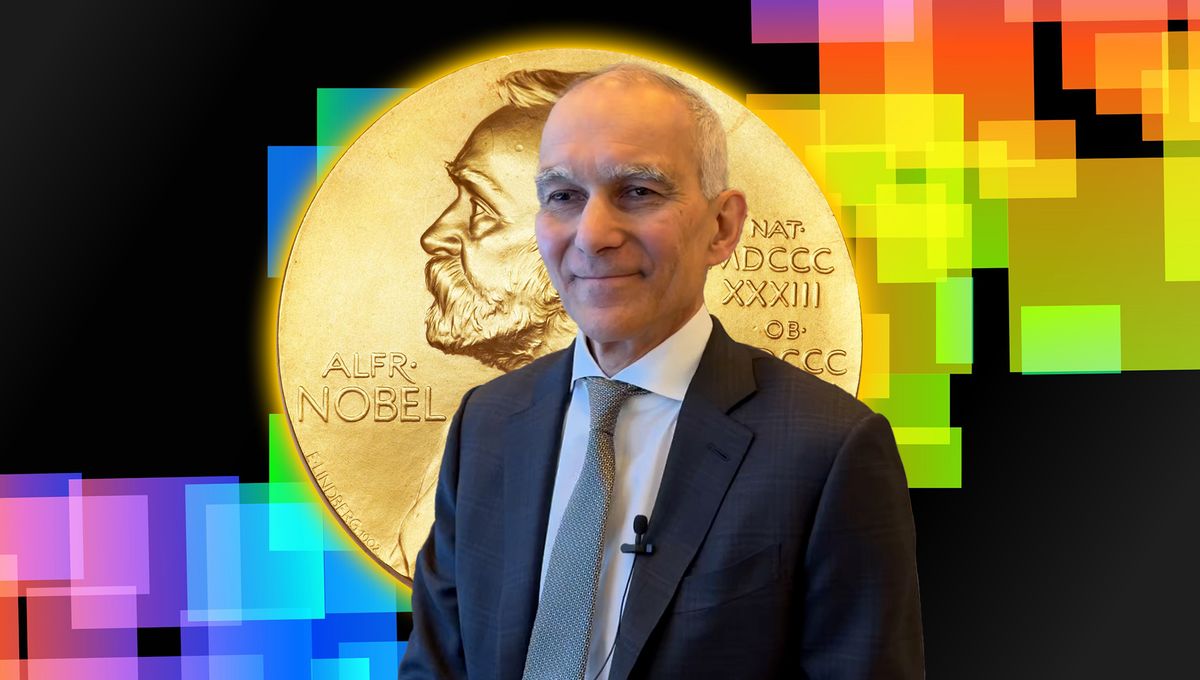
At our level, things remain the same color no matter the size. A gold ring is the same color as a gold crown. But at nanoscales, size matters when it comes to color. The idea of quantum effects in nanostructures was a well-established prediction even though, for decades, nobody could make those structures happen. But studying glass revealed a way forward.
The colors of glass, as you might see in cathedral windows or precious objects, can be truly variable, but glassmakers of yore were all using the same compounds – it was by changing their processes that they would get different colors. For example, a mixture of cadmium selenide or cadmium sulfide can give both yellow and red. Dr Alexey Ekimov, one of this year’s Nobel Prize winners in Chemistry, set out to find out why the same compounds can produce diverging hues. He discovered that nanocrystals of different sizes give rise to different colors.
Similarly, Louis Brus was synthesizing crystals of cadmium sulfide, which can capture sunlight. These would be then used in chemical reactions. He discovered that the different-sized crystals were reacting to light in different ways. This was the beginning of quantum dots, but it was Moungi Bawendi and his team who developed ways to make almost perfect nanocrystals, a breakthrough that has led to many applications.
Quantum dots are a bridge between atoms and the materials we interact with normally. They are made of a few thousand atoms. Tiny, for sure; if you enlarged one to the size of a basketball, the basketball would be the size of the Earth. And their diminutive size means that quantum mechanics still dominates, but with an effect different from what you see in a single atom or small molecule.
“Quantum dots are tiny particles of semiconductors that are so small that the properties of electrons in them are determined by the laws of quantum mechanics. Because of that, the properties of quantum dots are nothing like those of the atoms or the big crystals that eventually they grow into,” Professor Bawendi, from MIT, told IFLScience in an exclusive interview during the Nobel Prize week.
Quantum dots can absorb light and then re-emit it in another color. Which color depends on their size. This incredible property allows them to be useful for LEDs, energy-harvesting and light-harvesting tech, but also in chemistry, biology, and medicine. Researchers are investigating if the quantum dots could be used to track cancer tissue in the body, and maybe kill it.
“The dots are already applied as color converters in biology for tagging cells or for imaging in vivo and certainly in displays,” Professor Bawendi explained. “The community also has learned how to combine quantum dots with other kinds of materials, either organic or nanoparticles that are magnetic or semimetals, to create ‘artificial solids’ that have properties that are different than ordinary solids. These could also lead in the next decade to applications, but I couldn’t tell you which ones.”
Similarly to Bawendi, Professor Brus did not want to make bets about possible applications of their work. “It is extremely hard to predict the future of technology,” Brus said during a press conference.
You can watch the full interview with Professor Mongui Bawendi about quantum dots, as well as his hopes for the future of science and advice to students, in the video above or by following this link.
Source Link: Exclusive: Quantum Dots, From Old Colorful Glass To The Technology Of Tomorrow